It is a new year, so we want to look at how we are doing business on the firing line. The reliance on software, our smartphones have made many shooters lazy when it comes to managing their dope.
We have moved away from lugging a databook everywhere we take our rifles. I still use them, and absent of my official databook I will carry a small Rite in the Rain notebook to record the data. I recently stumbled on a website, Tactical Notebook Covers, and upgraded my databook package with an enhanced cover. It helps me organize my information in a much more manageable package.
Precision & Accuracy
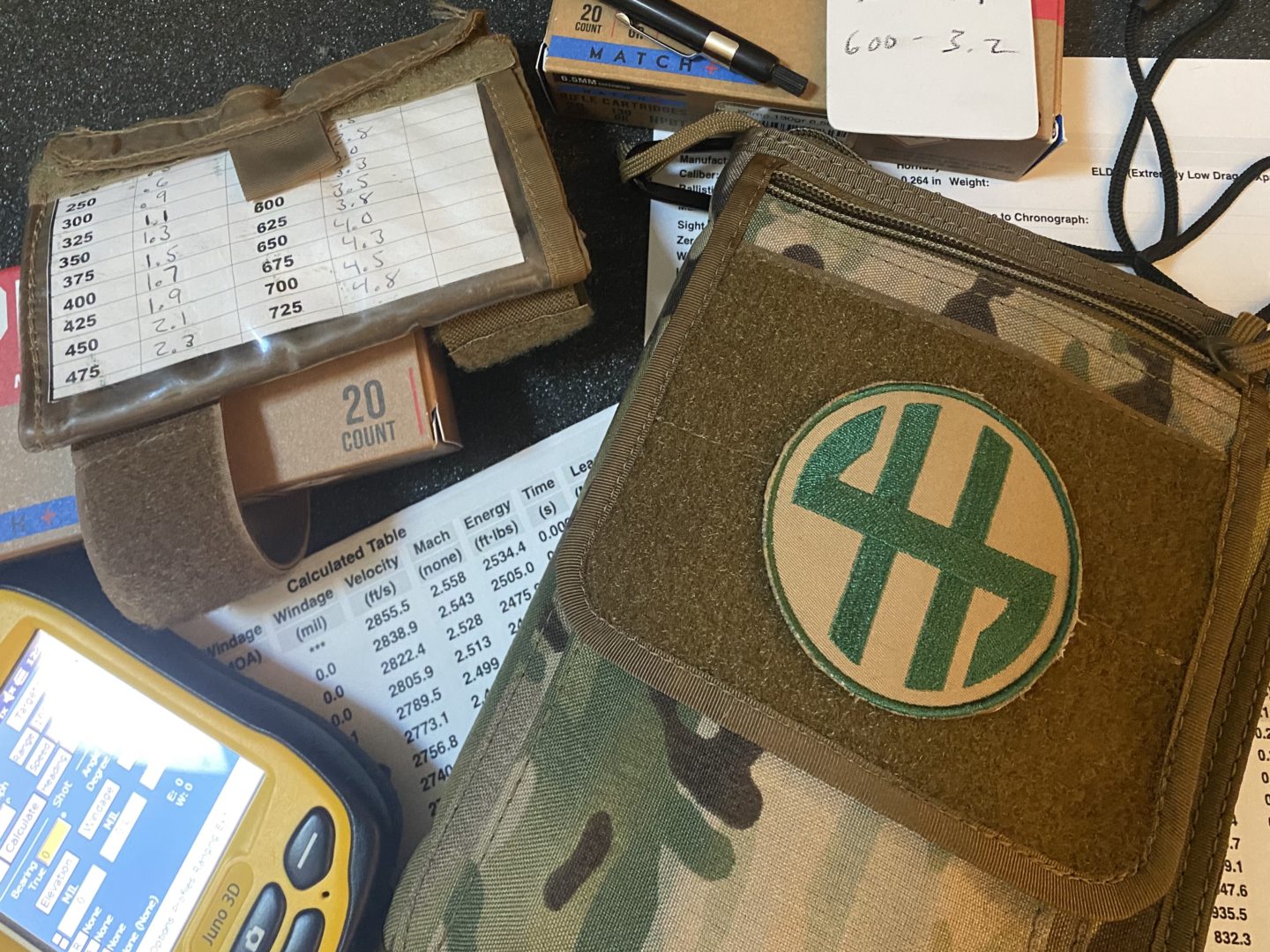
If we look at two of the most critical factors we work with, Precision and Accuracy, we quickly see why we want to manage our data for future success. Precision is how big of a group we shoot, while accuracy is our ability to hit, point of aim, point of impact. Our ability to interpret our data is what establishes our certainty. If our given rifle scenario requires us to hit a 2 MOA target at 833 yards away, we need to know the wind and trajectory necessary to hit the target. That is our DOPE or Data on Previous Engagement. What did we use to hit a specific target under known conditions? It lays it out for us in the name; we need to recognize and understand those known conditions to give the scope the proper inputs.
How we read those conditions can take on several forms. We can use the raw inputs from a weather station. We can shortcut those individual inputs in favor of density altitude, which is a single number interpretation of that raw data. Or, like many people, you can wing it and hope for the best. If you never venture too far from your home range, the conditions might be manageable from an individual’s perception. The raw data we are looking at includes:
- Barometric Pressure
- Temperature
- Humidity
If we combine all three, we have Density Altitude, which tells the bullet where it thinks it is flying. In this situation, it is the only time we need to worry about humidity as a factor of DA; otherwise, it is unnecessary to consider. In your software, just set it to 50% and call it good.
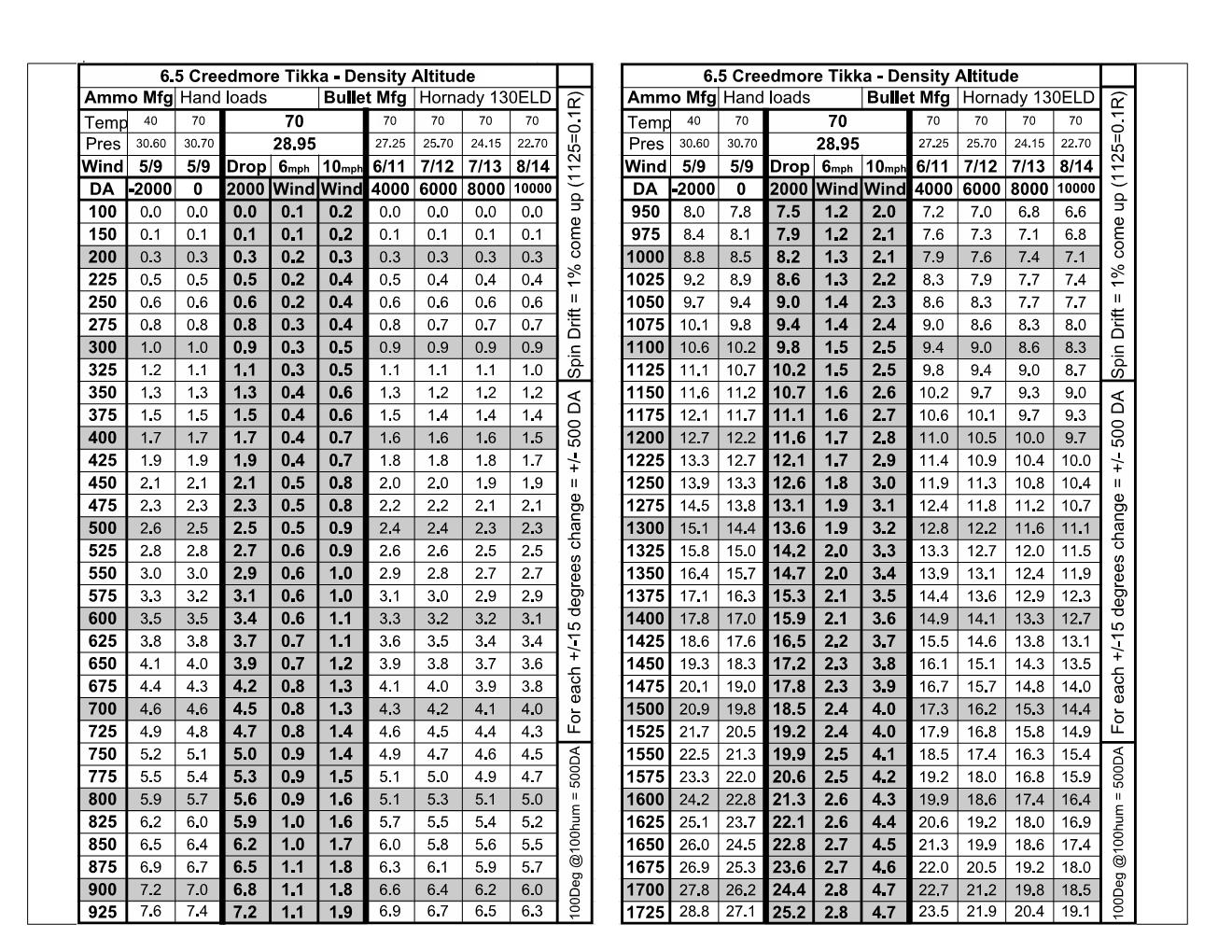
Atmospheric conditions need time to work on the bullet. Inside 300 yards, the changes in weather will have a very tiny effect. The farther you shoot, the more important it is to manage these changes. I highly recommend a kestrel weather meter as an essential part of your kit. I believe the models that host ballistic software are a better investment because of field use. I would much rather see a kestrel in a shooter’s hand than their iPhone. Sure the phone software is excellent, but the units are not very field worthy, and they are slow to access. You can use the smartphone to manage the data on the kestrel, but in practice, you want to simplify your gadgets.
Remember this: the software on your smartphone is a tool, not a toy. Many new shooters treat them like a game because they lie on our phones, but these are far from games. Crunching imaginary numbers on your ballistic calculator is an exercise in futility. It clouds the mind; we start to question the data because hypothetical data never line up correctly.
Gathering Dope
How do you establish your dope is the first question we have to answer. Picture this, Christmas is less than a week behind us; many shooters unwrapped that new boomstick. Maybe you finally jumped on the 6.5 bandwagon, so it’s all new to you. Where do you start when you have no foundation to build on. Enter our weaponized math.
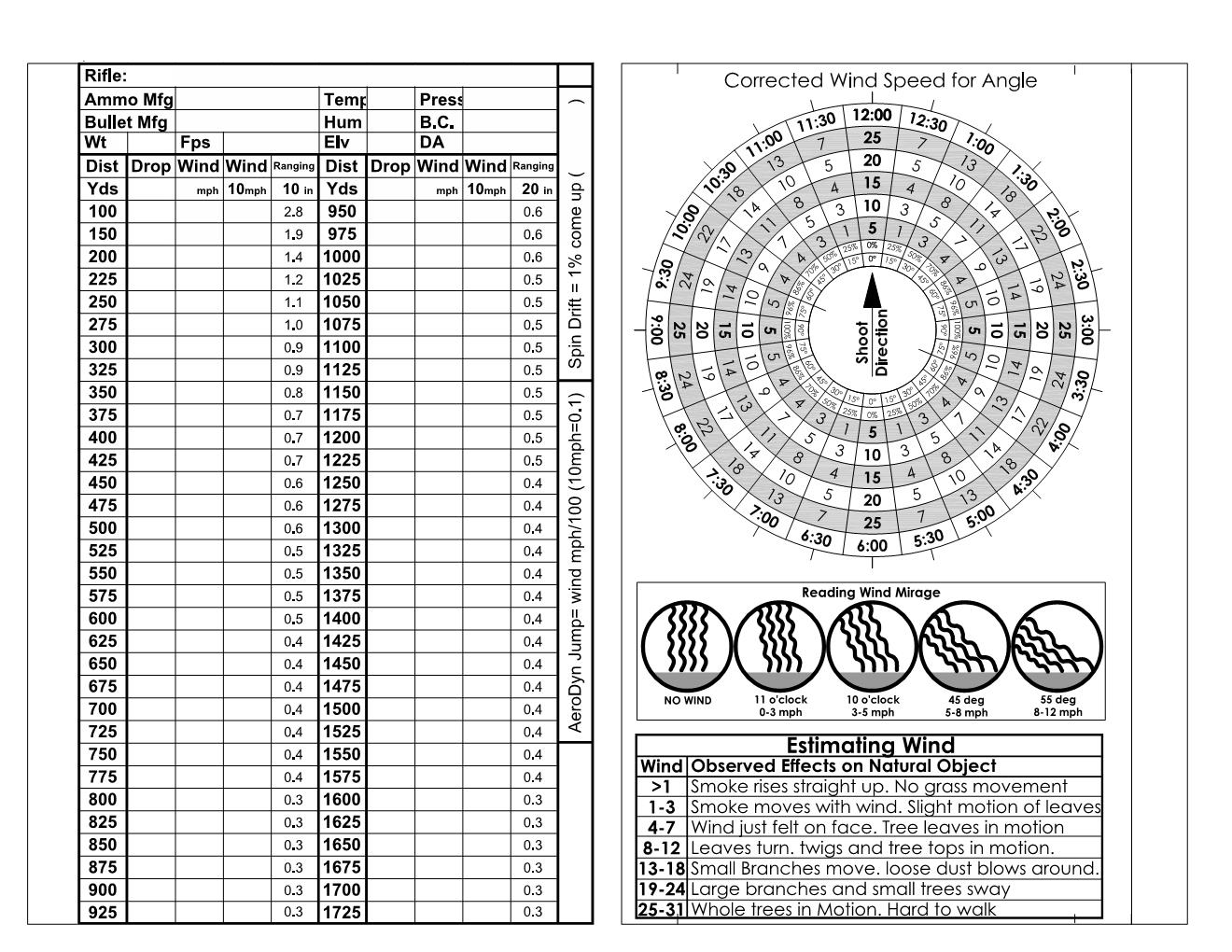
Weaponized Math that came from Marc Taylor with our Alaska Precision RIfle class is the easiest method I have found to establish dope when no other factors are known. I have a rifle, scope, and a box of ammo, what do I need to hit my target now?
Before you begin, understand, we don’t need a muzzle velocity. In the past, I would recommend you zero your rifle at 100 yards, then chronograph it right after knocking out a few fundamentally perfect groups for practice at the same time. But your software is going to change that number anyway, so we can skip this process if you don’t own a chronograph.

So we need to dope our rifle says baseline data. Beginning at 200, we know roughly 2 MOA or .5 Mils will get super close. Most modern calibers will be slightly less, but between 1.5 MOA and 2 MOA is a great starting point. That is .3 Mils to .5 Mil for righteous in the crowd.
Treating 200 yards like we treat the 100 is not a bad idea either. Two hundred may seem like no big deal, but it exposes a lot of weakness in a shooter’s fundamentals. Groups don’t go from 1/2″ at 100 to 1″ at 200; they go to 1.5″ It’s never linear. So practice here a bit to establish a nice rhythm.
Once we have those fundamentals sorted out at 200 yards, we have to transition to 300 yards by doubling that number. Whatever value you established at 200, double it at 300. So .5 Mils becomes 1 Mil, or if you used 1.75 MOA make it 3.5 MOA for 300 yards. This should give you the perfect starting point.
We want to make sure we have a fine aiming point at every yard line. As we move out and targets get bigger, we need to verify our point of aim is lining up with our point of impact. Using a water line or fine aiming point that is consistent across the targets is essential.
With your 300-yard data, our weaponized math will kick in.
Here is the breakdown of the method:
300 yard drop data X factor 1.75 = 400-yard data
400-yard drop data X factor 1.45 = 500-yard data
500-yard drop data X factor 1.40 = 600-yard data
600-yard drop data X factor 1.30 = 700-yard data
700-yard drop data X factor 1.25 = 800-yard data
800-yard drop data X factor 1.24 = 900-yard data
900-yard drop data X factor 1.22 = 1,000-yard data
The X Factor is flexible; it’s how you true the numbers to your system and under your current conditions. The adjustment most likely won’t appear until at least 700 yards, and it will be minor. But that doesn’t mean it is not correctable; you can tweak the X-Factor.
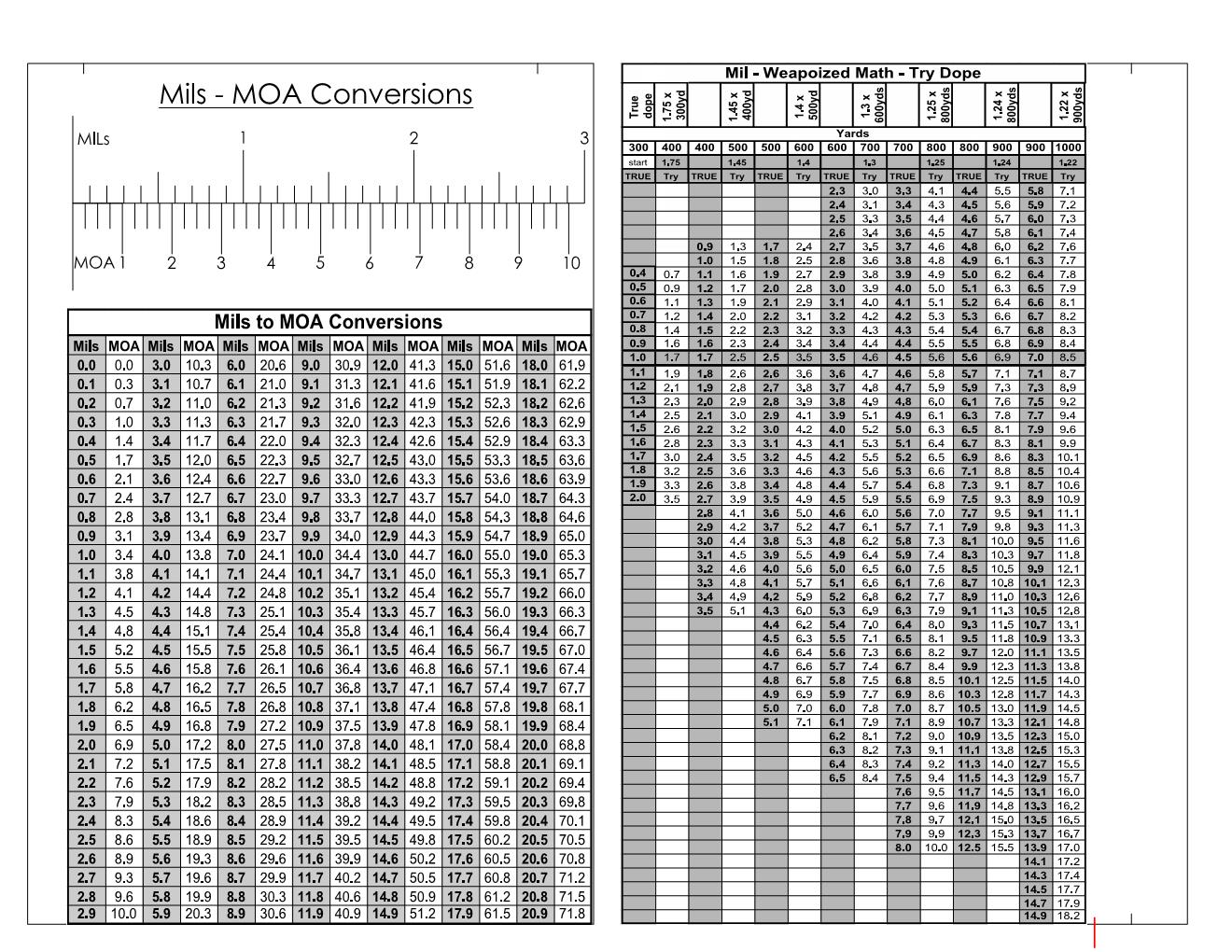
I find at 900 and 1000 yards here in CO my X-Factor is 1.20 vs. the 1.22 noted above. Usually, these numbers will be within 3/4 MOA of the center of the target.
The difference here between software and our Weaponized Math is what we use to predict the future. In this case, we are using our actual drop from the previous yard line. As we often find with software, one side might be off where the opposite end lines up. When this happens, we have to start dancing to bend the curves to match both sides. With the Weaponized Math, you can change a single value without touching other yard lines. If everything lines up but the 800-yard line, adjust that unique value, not the entire process.
We want to shoot every yard line available, the more information we have, the better our data will resolve.
Managing the Data
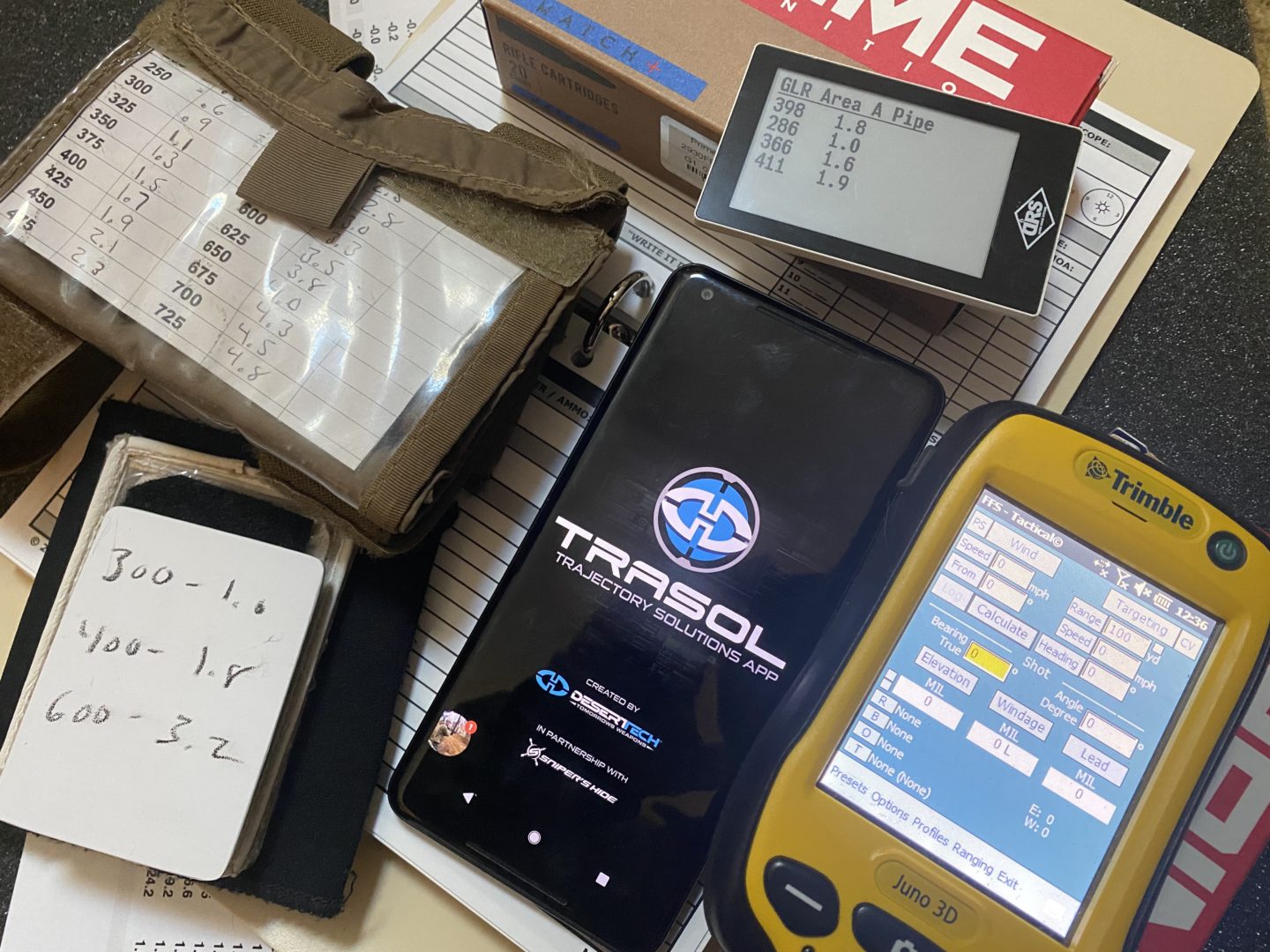
After establishing our drop, we now want to manage that data, so it is easily accessible. We never know where we might find ourselves when shooting, so again, I wouldn’t say I like to rely on just one method of data retrieval. I have hard copy data stored in more than one location.
- Impact Databook
- Wrist Commander
- On the Rifle
- Phone App
These are the 4 locations I keep my information.
My Impact Databook is my bible. There is any number of pages to manage the things that are of vital importance to me.
The wrist commander is my field/competition method of data retrival. When you need your data available, having it at your fingertips cannot be beaten. I don’t care about the position, I can see it, and I don’t have to think about it. I need a range; I flip my wrist.
On rifle is the smart choice, especially if you are trying to manage more than one system. Pairing your data to the rifle is an efficient way to keep everything together. They have all sorts of stickers you affix to your stock or use the sling version. Many competition shooters have the cards on the rifle or scope. Often those are used for active targets or stages instead of just hosting the entire dope chart. You can do both quite easily, have a sticker on the stock with a mini white card on the scope; it costs nothing.
Finally, my Phone. To me, a Phone is an administrative tool. I am not breaking it out under time or stress, let alone rely on it in the field. I use it to back up my hard copy data as well as predict changes in environmental conditions. I want the software to crunch numbers for me, but I am not being controlled by it. Prior, proper planning prevents piss poor performance. My Phone is part of the planning stage, not the execution. I can do a bit of market research with it, but I understand the limitation of hypothetical data. I use it big picture in these cases, and not for fine details. Fine details can only come after truing the software to my actual drops. I need to shoot first, play with my software after, and rarely on the firing line because I don’t want to be distracted.
If you are doing longhand math on the firing, you already lost. The same can be said for your Phone. If your method data management is your smartphone, you already lost the race. You are not going to hit any target without first managing your dope.
Better record-keeping means better results. Learn to interpret your data, see the patterns that appear, and back up your computer.
Have a great new shooting, head over to the Forum for More Discussion


